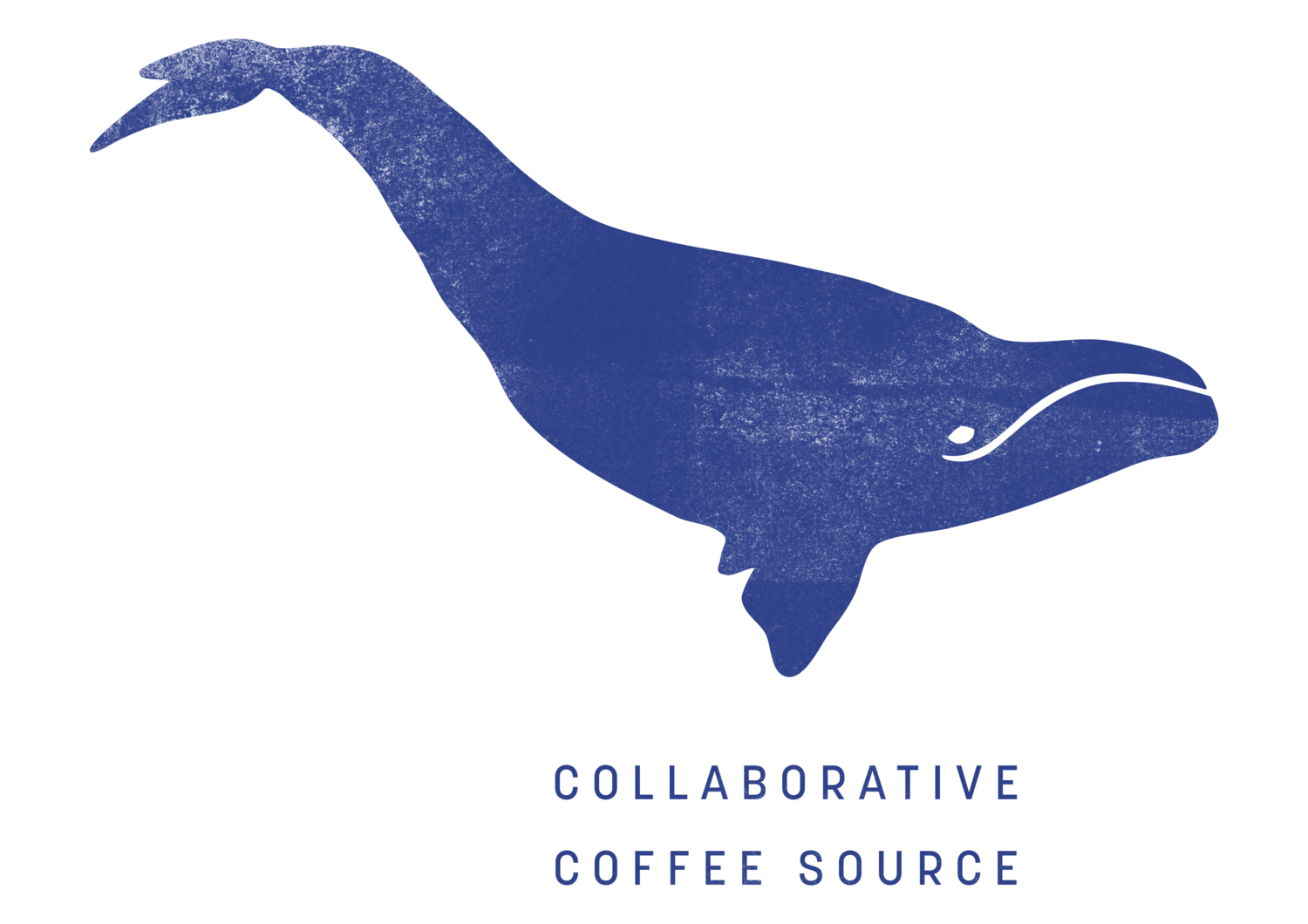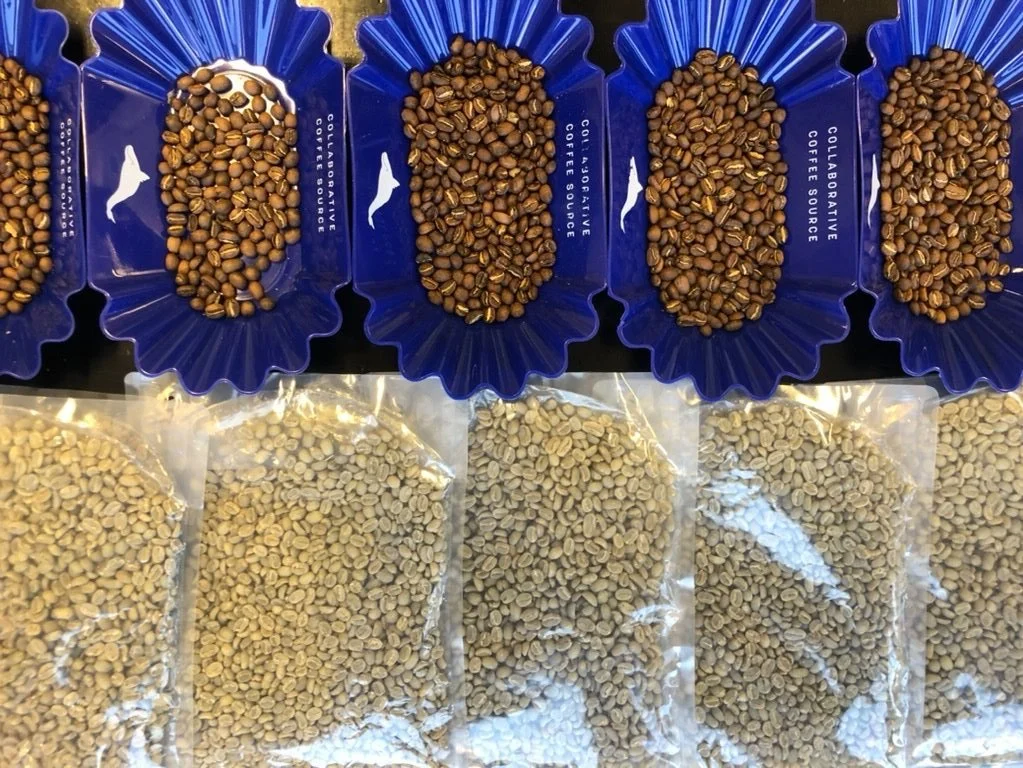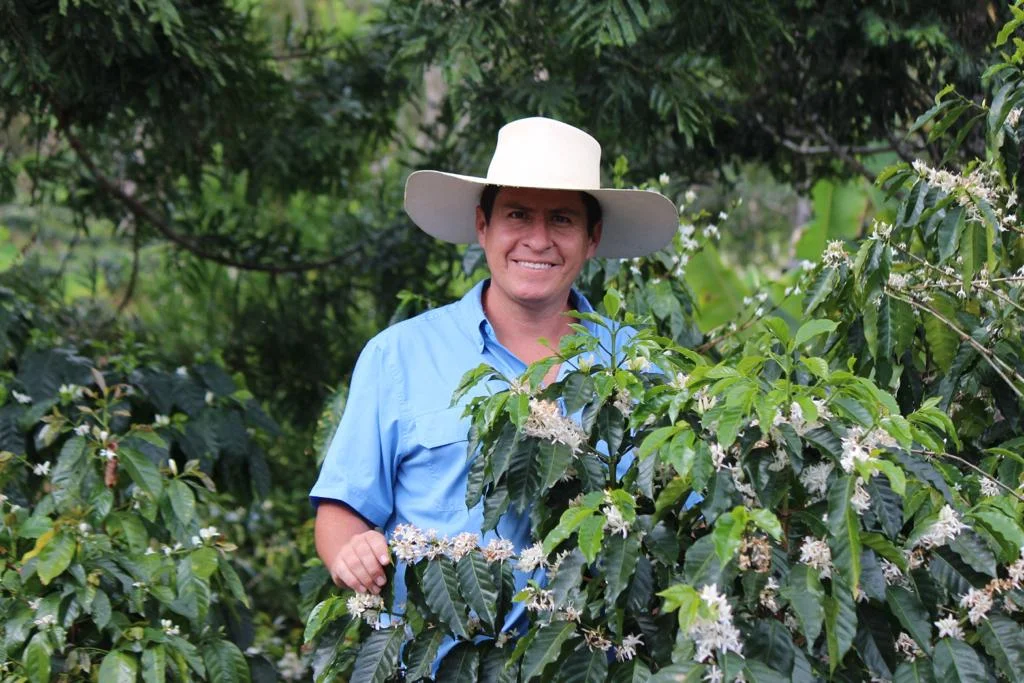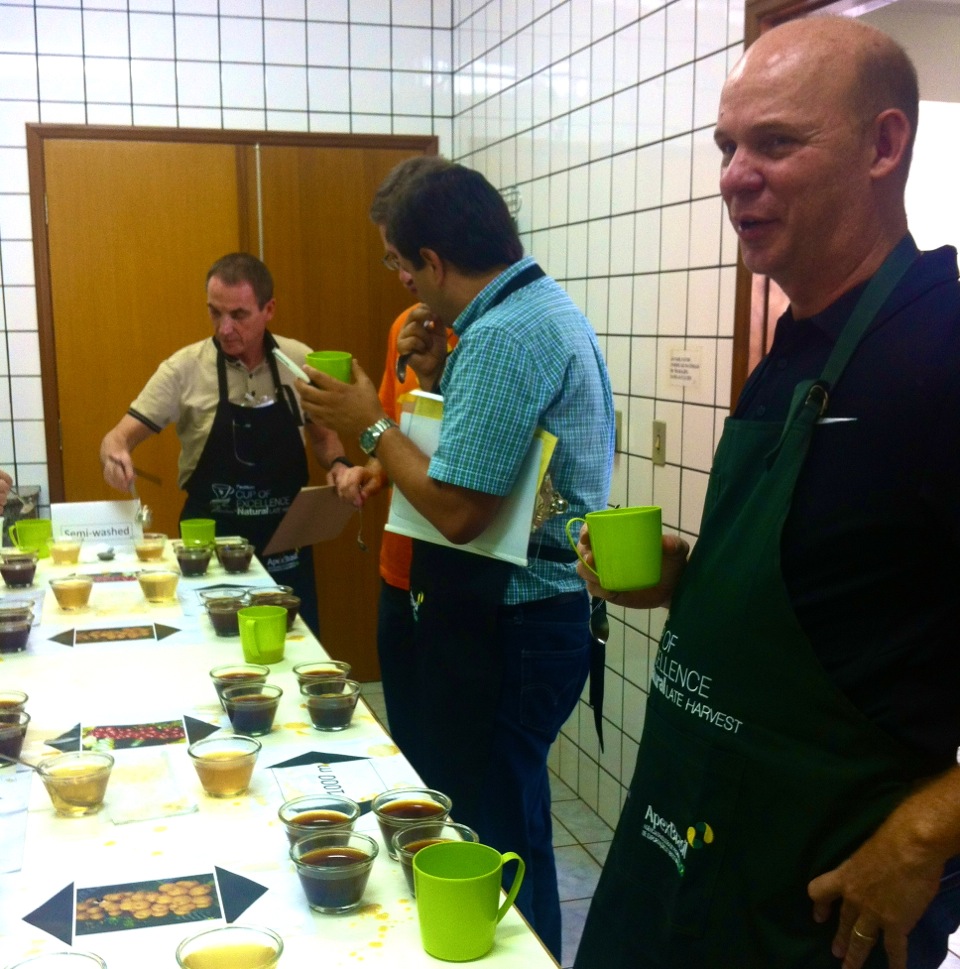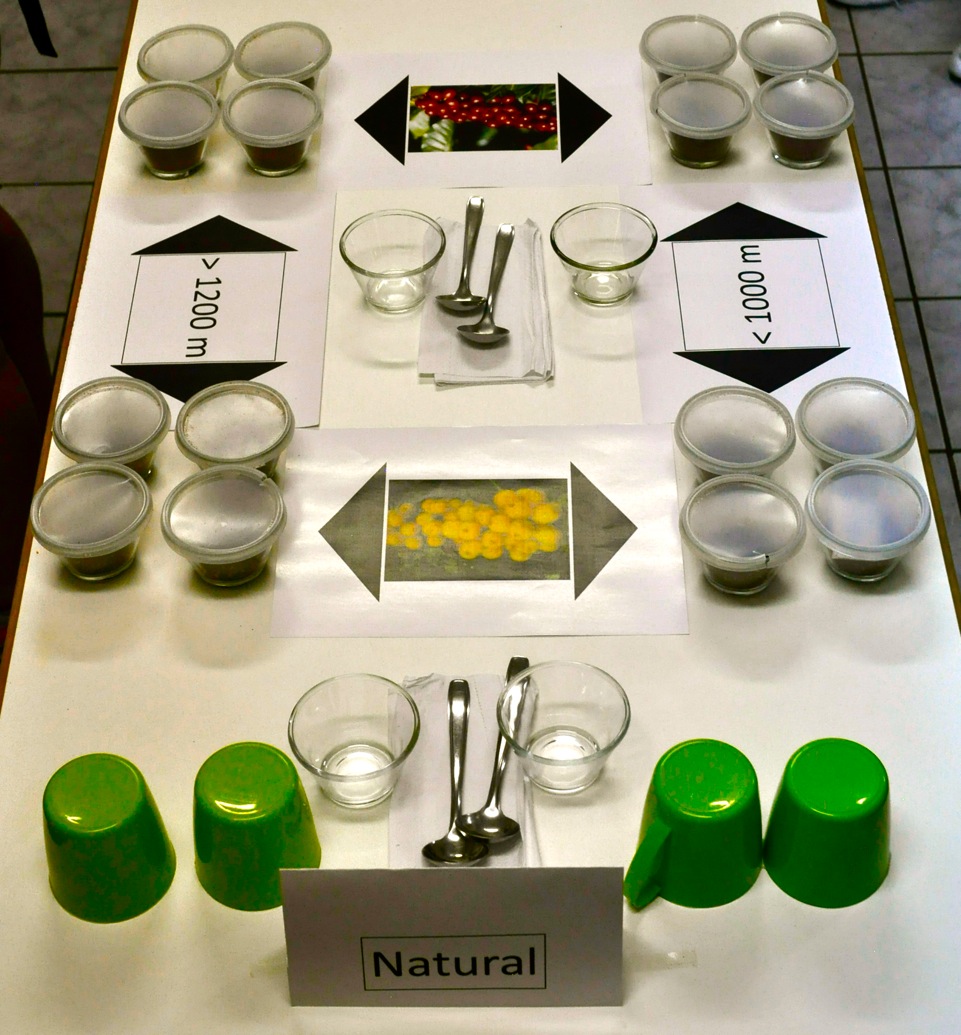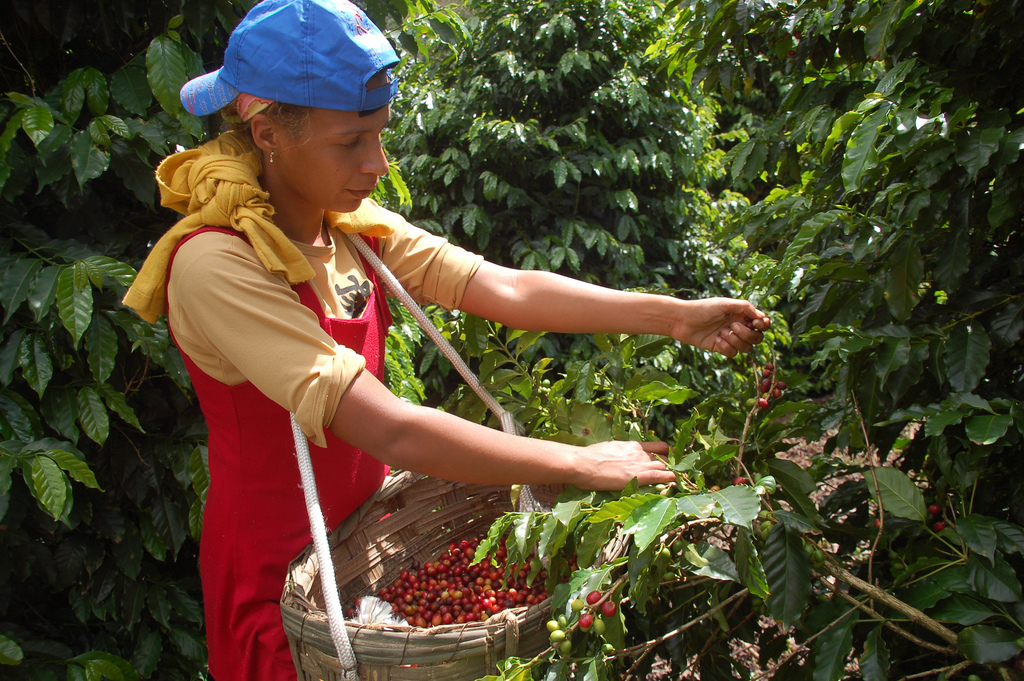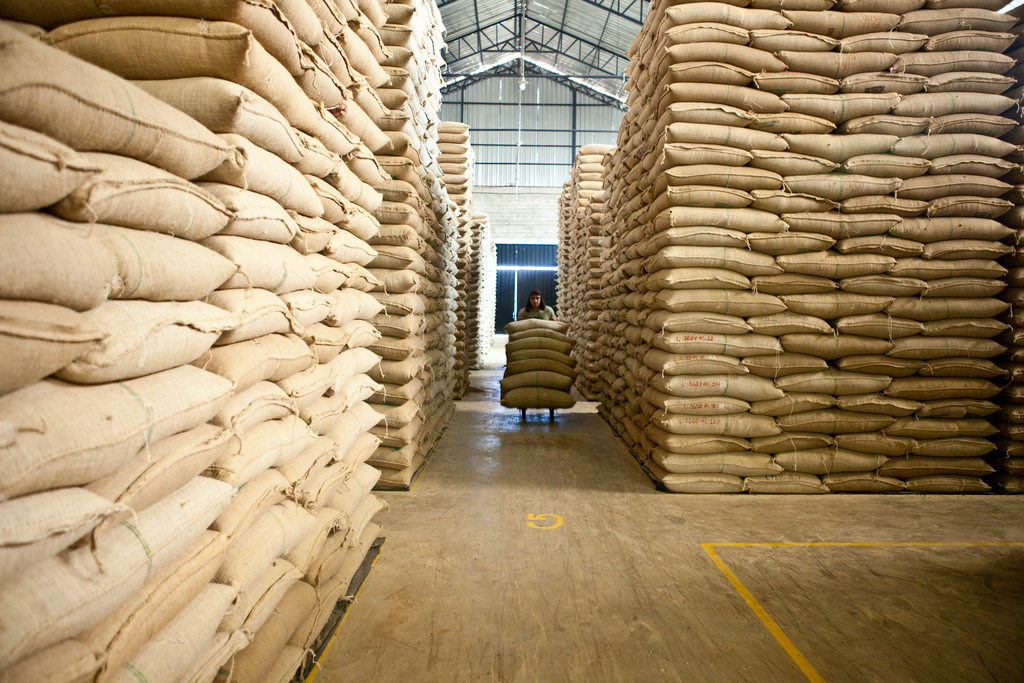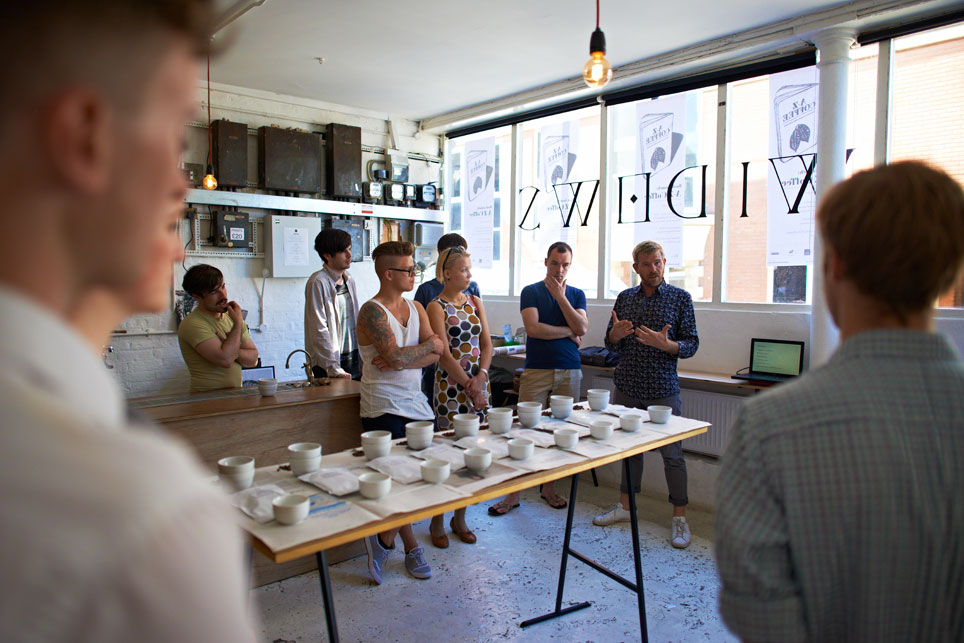[gigya src="http://www.flickr.com/apps/slideshow/show.swf?v=71649" width="700" flashvars="offsite=true&lang=en-us&page_show_url=/photos/kaffa1/sets/72157631279228920/show/&page_show_back_url=/photos/kaffa1/sets/72157631279228920/&set_id=72157631279228920&jump_to=" allowFullScreen="true" ] Burundi is geographically and politically divided into provinces, municipalities and hills.
A hill or a big hill (as it often literally is) defines rural communities. One’s life is often defined by the hill s(he) lives on – the way the land is shaped informs the way one lives.
As mentioned in the last post, the whole country is in use, and farms are glued to the terrain, along the hills, or at the bottom of them (the area between hill formations). In some areas, over 500 families live per square kilometre (!), making for extremely cramped conditions.
I spent the last of my days in the country familiarizing myself with Burundi's northern coffee regions. The country is small, so you can travel around very quickly, but everywhere are rock formations that must be manoeuvred and the roads are always full of people. Bicycles, mopeds, cars and trucks must all push forward into the stream of people along the roads. Bujumbura is located within 800 meters of Lake Tanganyika. The drive into the country ends here and within a short time, you’re already up in the mountains. Just north, toward Kayanza, one first passes the known tea regions in Teanza. The hills here are covered in tea bushes, as though covered with green velour carpeting. At around 2000 meters, one notices the climate is fresher, wilder, the wind gusts through the treetops.
My hosts and I travelled to the Coffee Washing Stations (CWS) in Kayanza, where presumably the best coffee in the country is processed. Several of the CWS here delivered the best lots to Burundi's Prestige Cup last year. Prestige Cup was predecessor to this year’s Cup of Excellence. This year the winning lot at Burundi CoE also came from Kayanza.
A little background on CWS
Burundian coffee farmers use their land to grow sustenance food for the family, as well as coffee bushes. The people of Burundi have little tradition when it comes to coffee consumption and sell their coffee cherries for cash to buy clothes, school books, and other things. Farmers no longer process their own coffee cherry; they sell them to CWS, which then processes them into green coffee. But a farmer can be a member of a cooperative that owns a processing station. One typically belongs to whichever CWS is closest to his/her hill or hillside. Cherries are transported daily to the processing station on foot (more accurately, on one’s head) or by bike. After a few hundred farmers supply their daily pickings, everything is mixed and processed the same afternoon. The coffee cherries are then fermented, washed and dried together to represent one day’s production.
This year's winner is “Businde” but we visited neighbouring Mpanga at 1750 masl, which came in second place at Prestige Cup last year. Jean Clemént built Mpanga three years ago, after having worked for over ten years as head of several CWS in the district. He took out loans, partnered with a good colleague and built a CWS as he thinks it should be. But Jean Clément does not speak English, so I got to know him through his cousin, Jeanine.
Jeanine is a graceful woman in her forties who speaks very good English, having lived all over the world throughout the years. She left Burundi just before the first ethnic executions began in 1988 and until a few years ago, she had not seen or heard from her cousin. The last she’d heard of him was that he and his siblings had managed to escape into the woods, as rebels stormed their home and took the lives of all the adults in the house. Now the cousins are reunited and Jeanine has set out to tell the world – in English – about cousin Jean Clément’s work and success. I was all ears.
Over 3,000 families/farmers sell their coffee cherry to Mpanga. Everything is right: altitude, climate, soil and varietal. Each family delivers an average of 500kg per season and Jean Clemént insists on red and ripe cherry. If cherry to this standard is not delivered, it’s sent back to be well sorted. The wet processing technique, which has been common in Burundi since the early 1980s, was reportedly implemented with pressure and support from the World Bank – because it gives coffee value. This is the first time I have seen the use of this technique: after removing the pulp, the coffee is initially fermented for 18 hours in its fruit. The next day the coffee is fermented further in fresh water for an additional 18 hours, but without having been washed. Then the coffee is cleaned in the classical method of washing in channels of fresh water, before it is finally soaked and dried, as is the standard practice in Kenya. For many, this double-fermenting technique has died within the last 2-3 years. If not due to the privatization of CWS, or to allow for less work, then for other causes, which I do not yet have clarity on. But it was difficult to have clarity, when I encountered representatives from the entire coffee industry: members from all levels. Everyone I met was hungry to know what coffee professionals outside the country want and think. It is both strange and wonderful to know that we now discuss how coffee cherries should be processed - to achieve desirable flavour attributes. It's a conversation coffee roasters and coffee farmers could not have had just a few years ago. At least not in Africa.
Jean Clément is provisionally willing to continue with both techniques, at least as long as he has buyers who want one or the other. According to him - I have yet to taste it for myself, and he did not have empirical experience for this - double fermented coffee tastes sweeter, while single-fermented coffee has more acidity. If anything, I would have thought it was the other way around. But the point is that Jean Clément, a farmer and coffee processor in an African country, holed up in a mountains, far off the beaten track, with no means to communicate other than in French; only now has he come in contact with a market that he can communicate with (via his cousin) - and produce the coffee you want.
The future has arrived.
Jeanine (aforementioned cousin) has also helped set up an export company so Jean Clément can send coffee out of the country directly to the buyer and be left with all the profit of his work.
A little number crunching: a farmer delivers and therefore sells his/her own coffee cherries and this is the source of income for the family. Last year the minimum paid for cherries was, on average, 600 BFR or $0.45 USD per kilogram of cherry. If one has 500 kg of cherry per harvest, the annual income is 1250 BFR ($225 USD). Keep in mind that 5 kg of cherry yields about 1kg of green coffee.
During my last visit, I hung out with Angéle, a very hands-on and lively woman. She was born and raised her four children (now almost adults) in Bujumbura. Previously she worked with buying and selling green coffee on the commodity exchange, but in the last six years, has acquired some pieces of land in Kirundo, her home district. She knows the people here and is confident that she can run coffee farms, even though she still lives in Bujumbura. The layout of her farms is drastically different from what one typically expects from coffee plots of 100-300 trees and she will soon have 30,000 coffee bushes on her land (a 12 hectare plot). The "oldest" part of the farm is five years old and produces about 10 tons of Bourbon. She wants to make her coffee operation organic, through the use of organic fertilizers and compost, active farming and frequent maintenance of her coffee bushes.
A few months ago she bought four CWS in the area. We visited Gasura CWS in Kirundu province, which receives coffee cherry from about 1700 farmers and their families, living on 10 different hills. She is currently double-fermenting but wishes to stop using this technique.
Stay tuned for my next post, where I discuss my visit to the Gitega region in the south, where 7 of the 17 CoE winners are from. I talk about cup profiles in this coming post.
Robert
